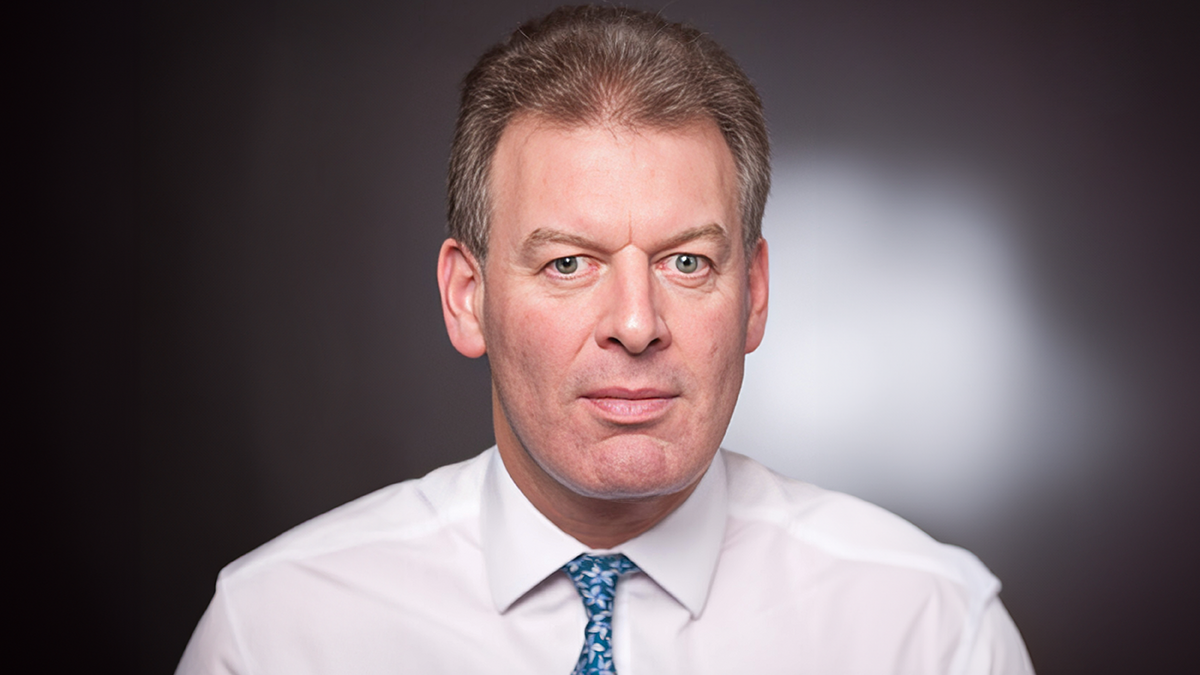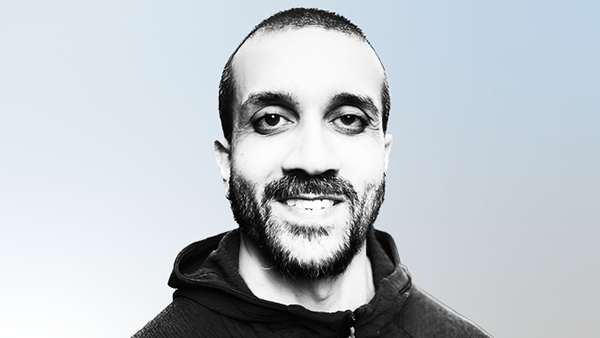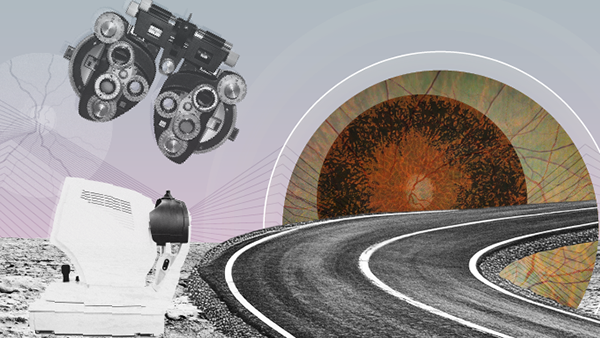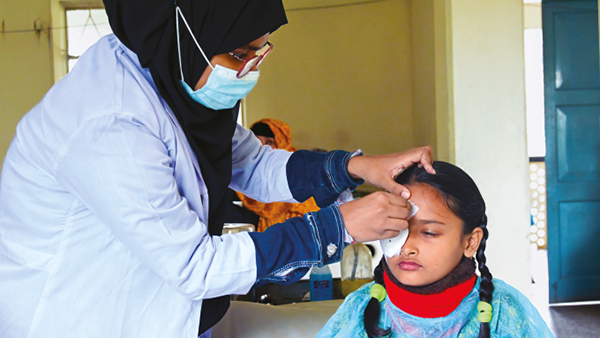You are viewing 1 of your 3 articles before login/registration is required
A View from the Bridge
An interview with VisionBridge’s Julian Jackson
Julian Jackson is Founder and CEO of VisionBridge, an independent social enterprise focused on sustaining innovation in eye research and assistive technologies. A champion of innovation and user of assistive technology himself, Jackson talks to The New Optometrist about his mission to secure the most appropriate development funding for innovators at the beginning of their journey – and to ensure that the right assistive technology and equipment is placed in the right hands at the right time.
What kind of technology is VisionBridge advocating for – and what can it bring to vision-impaired and blind people?
I don’t actually have a commercial interest in technology, but I praise and advocate for things that will help to revolutionize the vision tech space, which I have a vested interest in because I am blind myself. There are so many great wearable or portable solutions and app-based technologies out there. One example is the WeWALK Smart Cane, the second version of which comes out in April. The front of the cane has a fantastic obstacle-avoidance sensor; it can prevent you from bashing your head on signs, branches, and other overhanging obstacles. Another shining example of real innovation that I strongly believe will deliver a bigger revolution to people’s quality life than the motor car is digital wayfinding solution Waymap. This kind of assistive technology is not reserved for the VI or blind space; it can also benefit people with autism, learning disabilities, or mild dementia. Or even people like my mother. At 92 years old, she is not sensory or cognitively challenged, but if you stick her in the middle of Heathrow airport with all the noise, lights, and signs, she will be confused. If she had an app that she can speak to and say, “Take me to passport control,” or “Take me to Cafe Nero,” or “Take me to the ladies’ washroom,” it would be fantastic.
What other technologies are you excited about?
For optometrists, the new Fluorescein Filter from Aston Vision Sciences (AVS) is something that has grabbed my attention. It offers high-resolution observation of the anterior surface and a wide range of anterior eye defects. It’s especially good at seeing tear film break-up, which is used for dry eye disease assessment, partial blinks, and foreign bodies in the eye. It’s small and can be hand-held or fitted to most common slit lamps for hands-free operation. It has a custom yellow color formula that AVS developed that is tuned to work close to the fluorescein emission spectrum, meaning clinicians get high clarity and contrast compared with others on the market.
We’ve trialed it with a lot of optoms; and many of them thought it was amazing, especially those who are working with 20-year-old slit lamps. I know many optoms who love their 20-year-old lamps, of course, but they want to be able to improve that experience. This clip-on filter, at around 35 quid, offers a cheap option to do that. Anyway, I introduced the filter to Sight and Sound Technology, who love it and are now out distributing it.
How do you help to promote these technologies?
Well, I talk to publications, like The New Optometrist! I’ve got global networks, social media – with a huge following on LinkedIn. I’m involved with lots of different trade mags and portals around the world. I’ve been running VisionBridge since 2016 and my network is now massive. I make a nuisance of myself at conferences and exhibitions. I work on CPD stuff and bring speakers to events like 100% Optical.
And, importantly, I talk to developers and get them to talk to each other. It’s a two-way street, with the goal of bringing their offerings to wider attention and, ultimately, improving those offerings where possible. All assistive technology becomes much more useful when it starts to converge, which I’m convinced will happen in the next few years. At the moment, you’ve got companies like Waymap, GoodMaps, and NaviLens. They all have different ways of guiding the user. For example, if I want to go into a supermarket and find a particular cheese, then Waymap can guide me to it. But it can’t tell me if the cheese is on sale or if it’s cheddar rather than a soft cheese. There’s the brilliant Be My Eyes app, which allows me to contact a relative or friend, who can get onto my phone camera and can tell me where I am or what I’m standing in front of. But these developers haven’t been talking to each other.
With my VisionBridge hat on, I’ve been encouraging them to get into a dialogue. This is made easier as I am blind and because I have this lived experience, people tend to sit up and listen to me. So I’ve said to the team from Waymap and the people behind the Be My Eyes app, “Listen, you’ve got to talk to each other about finding the best solutions.” I’ve also put a UK company called Zappar in touch with Waymap. Zappar has an app called Zap Vision, which accesses information through enhanced QR codes on food. So, if I go into a supermarket, the Waymap can take me to the cheese counter, then with Zap Vision I point the camera at the cheeses and the QR codes tell me about the cheese, what they cost, dietary information, and so on. When all this technology comes together, it can be so much more effective than it is at the moment.
Before the modern era of apps and technology, how did your own vision journey evolve?
I was diagnosed with retinitis pigmentosa back when I was five years old in 1967. The professor who diagnosed me was known for having the worst bedside manner, God bless him. I remember vividly him saying to my mother, “There is no hope for your son. I suggest you take him to a faith healer.” So that was how I knew that I was going to go blind at some point.
I was in my mid-twenties when it started to affect me. There was no assistive technology back then, so I just had to make my way through. By the 1990s, I was running a business – a company called ITE Group – and we took it public. We did very well out of it, then I spent time in and out of the events business. I ran a company that promoted top-end hotels worldwide. It wasn’t until 2010 when I lost my sight; and that’s when I started to think very seriously about research. I worked as a senior adviser for Fight for Sight, but looking around the charity sector I began to feel that there wasn’t enough advocacy. There wasn’t enough risk taking. And there was a lack of real imagination. So, I thought, I’ll do my own thing. I started to help academics with grant applications – which I still do – and I began helping with fundraising for startups and spin-outs. Having worked as a consultant all my life, I found I could move into this kind of work effectively. It just so happens that I’m blind too!
The New Optometrist Newsletter
Permission Statement
By opting-in, you agree to receive email communications from The New Optometrist. You will stay up-to-date with optometry content, news, events and sponsors information.
You can view our privacy policy here
Most Popular
Sign up to The New Optometrist Updates
Permission Statement
By opting-in, you agree to receive email communications from The New Optometrist. You will stay up-to-date with optometry content, news, events and sponsors information.
You can view our privacy policy here
Sign up to The New Optometrist Updates
Permission Statement
By opting-in, you agree to receive email communications from The New Optometrist. You will stay up-to-date with optometry content, news, events and sponsors information.
You can view our privacy policy here







